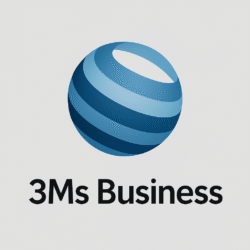Introduction to Business Failures
The entrepreneurial world naturally includes business failures which provide essential understanding about management challenges and planning weaknesses and market changes. A thorough analysis of business failures through post-mortem evaluations provides essential value to current business leaders and those who aim to start their own businesses. Organizations can obtain important lessons from studying others’ mistakes because this helps them discover direction toward success.
A business fails because of multiple elements such as insufficient market research combined with weak financial management alongside poor strategic leadership and resistance to shifting consumer tastes. The pitfalls demonstrate why organizations need to remain watchful and take proactive action when detecting performance decline indicators. Blockbuster and Kodak demonstrate to modern businesses why agility together with foresight remain essential elements of current business operations. Blockbuster’s failure to change its rental business model when digital streaming emerged demonstrates how businesses can become obsolete through their refusal to adapt.
The collapse of Lehman Brothers illustrates both dangerous financial practices and demonstrates how economic instability spreads across the global system when a major corporation fails. These instances demonstrate why sustainable business operations require strong governance together with effective risk management. Organizations gain improved frameworks for resilience through learning from their failures which help them adapt to changing conditions.
Top Case Studies of Notable Business Failures
The business world shows both triumphs and massive failures in equal measure. Blockbuster together with Kodak and Enron offer crucial knowledge about the elements that lead to corporate collapse. The lessons derived from failed businesses provide entrepreneurs and business leaders with essential knowledge for success.
The movie rental giant Blockbuster suffered collapse due to fast technological changes combined with changing consumer tastes. Blockbuster’s failure to adjust its physical store operations to compete with Netflix’s streaming service through a digital platform resulted in its decline as a leading company. Blockbuster failed to transform its business operations to meet new market needs which exposed it to bankruptcy until 2010. The case proves how businesses need to stay adaptable and have clear foresight in their strategic planning.
The case of Kodak demonstrates how organizations can fail when they maintain a status quo mentality. As an early photography industry leader Kodak failed to adopt digital technology although they developed the first digital camera. The company maintained its film product line while underestimating market changes as digital photography gained popularity. Kodak filed for bankruptcy in 2012 because it did not innovate or fund new technology development. This case demonstrates that organizations need to innovate to stay alive in competitive markets.
The 2001 Enron collapse demonstrates how unethical business conduct together with weak governance structures can result in catastrophic failure. Enron became a respected business until it began hiding its financial problems through accounting manipulation which led to its financial collapse and major economic impact. The case proves why corporate governance needs both openness and ethical conduct.
The case studies demonstrate three main lessons which include insufficient adaptation alongside insufficient innovation and unethical management practices. Future and current business leaders should study these notable business failures to acquire important knowledge which will help them build resilient organizations with forward-thinking cultures.
Lessons Learned: Key Takeaways for Businesses
Multiple crucial lessons emerge from studying the post-mortem investigations of well-known business failures which provide organizations with valuable knowledge for enduring success. Organizations need to develop strong evaluation methods which monitor their operational health. The framework requires periodic assessments of essential performance indicators (KPIs) which represent company-wide operational performance. Organizations can improve their monitoring capabilities by identifying performance indicators which enable them to make necessary strategy adjustments.
The essential lesson demonstrates that businesses need to accept changes in market dynamics. Organizations which focus solely on one business model become incapable of detecting shifts in customer preferences and new market rivals. Organizations need to develop flexibility as an organizational value to adapt their strategies when needed while taking advantage of new market possibilities. Businesses that conduct regular scenario planning exercises will better anticipate upcoming changes which enables them to prepare for different potential results and minimize unexpected disruption risks.
A business can avoid numerous errors through the establishment of open communication channels inside the organization. Organizations that allow all their staff members to share their ideas and worries create an environment which enhances the detection of early warning signs. Timely interventions become possible through the practice of transparency. Companies must proactively request feedback from both customers and suppliers to obtain complete market sentiment information and operational challenges data.
The pursuit of long-term objectives stands as the fundamental key to success. Organizations that chase short-term profits instead of sustainable development normally overlook innovative possibilities. Organizations achieve enduring success by dedicating resources to research and development and collecting customer feedback while continuously improving their offerings. Strategic business approaches help organizations protect themselves against risks and avoid typical mistakes which ultimately leads to improved operational resilience.
Your Prevention Plan: Strategies for Success
Every business needs a strong prevention plan to achieve both long-term success and sustainability. The risk management assessment stands as the initial step toward implementing a successful plan. The process requires companies to identify their probable risks which encompass financial instabilities and market changes and operational vulnerabilities. Organizations that identify their weaknesses can develop specific risk reduction plans that deliver effective protection. Such proactive measures protect the business while enabling it to prepare for unexpected challenges.
Market analysis functions as a vital element for developing a successful business strategy in the second step of this process. Businesses need to understand market trends alongside customer preferences and competitive landscapes to make well-informed decisions. Market analysis performed consistently enables organizations to modify their products and services to fulfill changing customer needs which improves their market position. Organizations should maintain ongoing customer engagement through feedback mechanisms to gather important insights which help them modify their products and marketing strategies effectively.
Businesses need to make fast adjustments to their leadership decisions. The key requirement for business leaders is to build a flexible work environment. The need for change awareness must exist alongside regular strategic assessments which use performance data and market developments to guide decisions. Leaders need to establish a learning-focused organizational culture throughout their businesses. Organizations should praise their achievements while studying their mistakes to obtain practical knowledge which guides their future planning process and prevents the repetition of previous errors.
A successful prevention plan functions effectively because it remains dynamic throughout its operation. The business environment drives its evolution which incorporates fresh insights and new learnings into its system. Businesses which implement thorough risk management alongside market research and flexible leadership will develop resilience to handle complex situations. A well-developed prevention plan helps organizations prevent failures while creating a solid foundation which supports future growth and success as they navigate business challenges.





